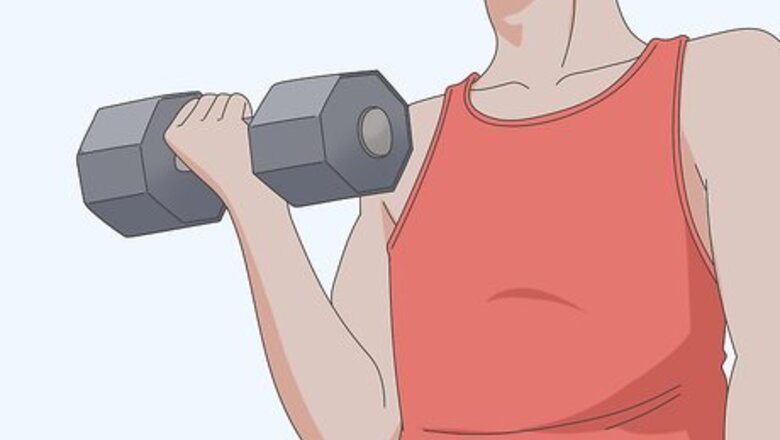
views
X
Research source
Check out the tips below to learn the fastest way to get bigger biceps.
Adjusting Your Training Strategy
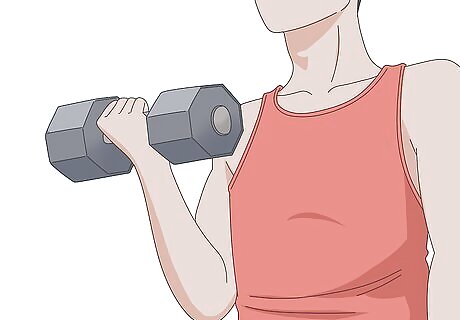
Put your arm exercises at the beginning of your workout sessions. At the beginning of your workout session, you have more energy and can push more weight around. This will enable you to grow more muscle mass more quickly. While this method will get you more size, it won't necessarily get you more strength than you would get if you used a different order because you're not changing the exercises or amount of resistance.
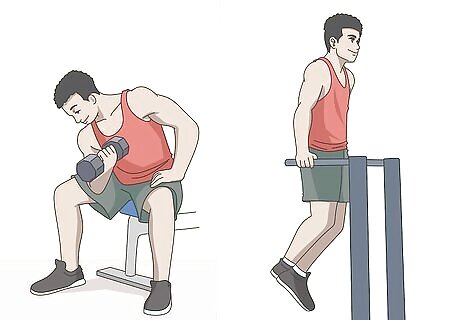
Increase the number of arm-training sessions each week. To grow your biceps fast, you need to work them more often. At the same time, you want to leave time for rest, since this is when your muscles repair and grow. This could mean that you include two arm-training sessions each week instead of just one. You can also build up the number of sets you do each week. A total of 20 or 30 sets per week produces optimal growth.Tip: If you're increasing arm-training sessions, pay attention to how much your arms are involved in other exercises so you don't overdo it. For example, on a back day, your arms are involved in almost everything you do.
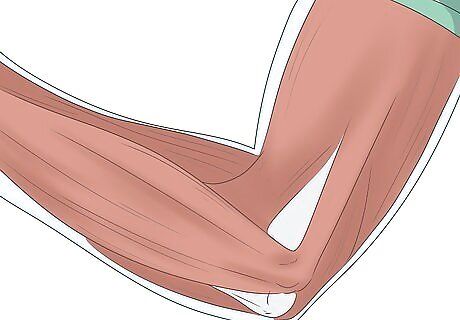
Develop your mind-muscle connection. Focusing on your muscles as you're working out actually increases growth. When you're lifting weights, focus on squeezing your biceps rather than simply lifting the weight. As you're doing an exercise, try not to think about the exercise itself or your form. Instead, think about what the muscle is doing. Direct your motions based on the muscle movement rather than your physical movement. For example, instead of thinking about lifting your body to do a chin-up, you would think about contracting your biceps. It can take some practice to adjust your focus. However, if you maintain this connection, you could grow your biceps twice as fast as you would otherwise be able to. EXPERT TIP Laila Ajani Laila Ajani Fitness Trainer Laila Ajani is a Fitness Trainer and founder of Push Personal Fitness, a personal training organization based in the San Francisco Bay Area. With over 10 years as a trainer and exercise specialist, Laila has expertise in competitive athletics (gymnastics, powerlifting, and tennis), personal training, distance running, and Olympic lifting. Laila is certified by the National Strength & Conditioning Association (NSCA), USA Powerlifting (USAPL), and she is a Corrective Exercise Specialist (CES). Laila Ajani Laila Ajani Fitness Trainer Not only does strength training build your body's muscles, it requires your brain to focus and work hard. What I find fascinating about strength training is that it combines mindfulness with physical activity. To improve your lifts and become better at strength training, you have to focus your attention during your workout.

Use your full range of motion in all exercises. You'll get significantly larger size and strength increases if you extend your arm through its full range of motion rather than using only a partial range of motion. You also stretch the muscle completely, ensuring that your growth is even. For example, when you're doing curls, contract your triceps muscle at the bottom of each rep to make sure your biceps are fully lengthened.
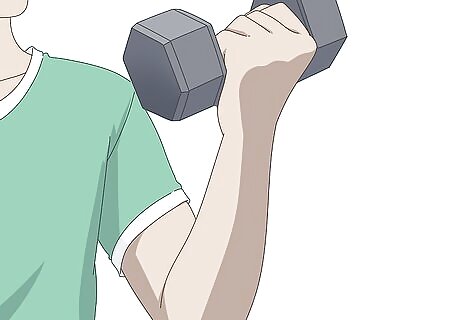
Push your repetitions past muscle failure. You've probably heard the phrase "no pain, no gain." If you want to build muscle mass quickly, the intensity of your workouts matters just as much as anything else. Continue sets until you can no longer do the exercise, then try to do one more set. If you can't do a full set, even a couple of reps can be enough to build larger biceps. This type of training can be extremely painful and also dangerous. When your muscles are fully fatigued, you are at greater risk of injury, especially if you can't maintain proper form. Make sure you have a spotter if you're working out past muscle failure.
Doing the Right Exercises
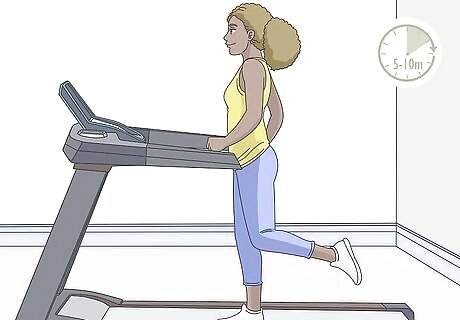
Warm up for 5 to 10 minutes before lifting weights. Warm up your entire body by cycling on a stationary bicycle at a moderate pace or walking on a treadmill. Dynamic stretches, such as lunges, can also help warm up your body. Then, do a run-through of your routine using an extremely light weight or just your body weight. You only need to do a few reps of each exercise as a warmup. For example, if you're planning to do 5 sets of 10 reps, 5 reps would be enough for a warmup. For example, you might do dumbbell curls without the dumbbell, just following the same motion, or using a light hand weight.
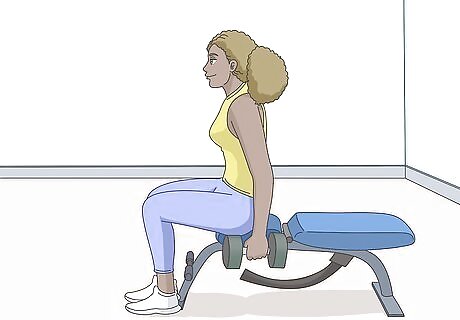
Start with seated dumbbell curls to work your biceps to fatigue. Sit on the edge of a bench with a dumbbell in each hand, palms facing inward. Contract your arms to lift the weights, turning your wrists so that your palms are facing upward. Keep your elbows pinned to your sides. Squeeze your biceps hard when you reach the top of your range of motion, then lower the weights back to the starting position in a slow, controlled way. You can also alternate arms rather than doing both arms at once, which gives each arm a little bit of rest in between reps. However, you'll typically have to do a lot more reps if you alternate to work your biceps to fatigue. Grip the dumbbell as far to the side next to your thumb as possible, rather than in the middle, to maximize the use of your biceps during curls.Tip: Increase both the weight and the sets you do each week to continually work your biceps to fatigue and build them up faster.
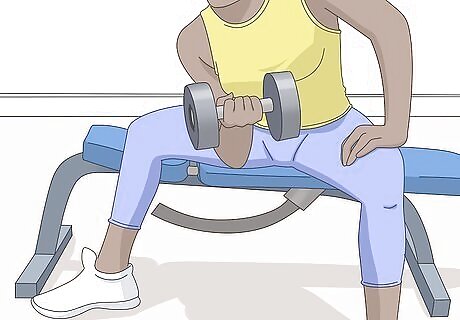
Move on to concentration curls to isolate your biceps. Still sitting on the end of a flat bench, spread your legs wide apart with your feet flat on the floor. Hold a dumbbell in one hand with your palm up and lean forward, pressing your triceps into your inner thigh. Curl the dumbbell up towards your shoulder, keeping your upper arm perpendicular to the floor. Hold the curl for one second at the top before lowering it slowly with control. Continue with this exercise until you feel that you can't do more. Then use your other hand to provide enough assistance to do at least 2 or 3 more curls. Then switch and do the other arm.
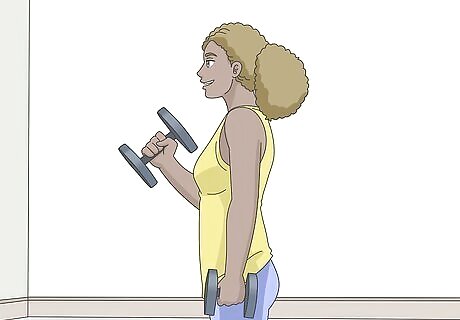
Target the long head of the biceps with alternating hammer curls. Your biceps are made of two parts, the long head and the short head. The long head creates the peak of your biceps and gives it size. Stand with your feet about hip-width apart and your knees loose. Hold a dumbbell in each hand with your palms facing inward. Curl one arm towards the opposite shoulder, keeping your elbow locked by your side. Hold the curl at the peak for one second, then lower the dumbbell back to the start in a slow, controlled way. Repeat the same motion with your other arm. Continue alternating until you feel like you can't do any more repetitions. You should be able to do a lot of reps of this exercise because your muscles are getting a brief rest while you alternate arms.Tip: Pay attention to the negative movement when you're lowering the weight and make sure you're doing it with a slow, controlled movement. It can be easy to use your body momentum on this exercise to swing the weights, but that won't achieve the results you're looking for.
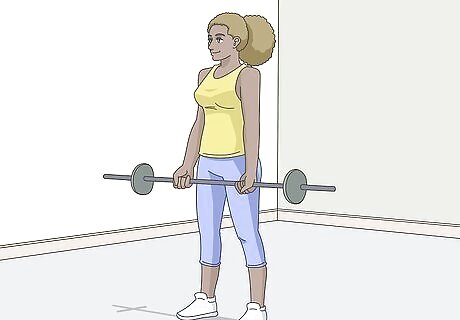
Build muscle mass with barbell curls. Standing with your feet hip-width apart, chest out, and shoulders back, grip the bar with an underhand grip. Keep your hands about shoulder-width apart on the bar and lower the weight so it's hanging in front of your thighs. Contract your biceps to curl the bar up to shoulder height, then release it back down slowly with control. Repeat until your muscles are fatigued. If you want to work different parts of the biceps, experiment with different grips. If you use a close grip with your hands just inside hip-width, you emphasize the long head of the biceps, which forms the peak of the muscle. If you use a wide grip with your hands just outside shoulder-width, you emphasize the short inner head.
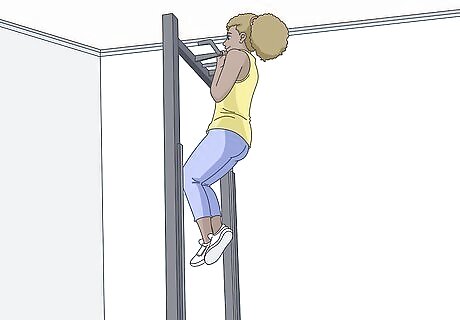
Do chin-ups to work the brachialis muscle. The brachialis muscle sits underneath your biceps. If you work the brachialis, your biceps will naturally look larger. While it can be difficult to do chin-ups for reps, a resistance band, wrapped over the bar and under one foot, might make it easier for you to do multiple repetitions of this exercise. For chin-ups, use an underhand grip (palms facing your body) and start with your arms fully extended. Pull yourself up until your chin is just higher than the bar, then lower yourself down with control.
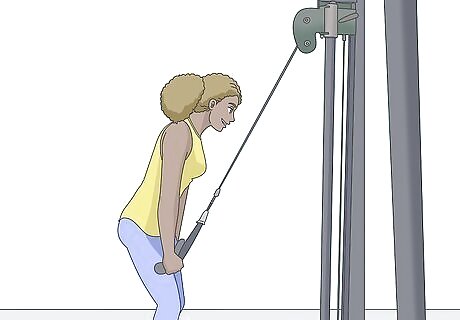
Group your exercises into supersets to build mass. Combining biceps and triceps routines into supersets produces an antagonistic effect that makes each exercise more effective. To do supersets, do 5 sets of 5 to 10 reps of one exercise, followed by a brief rest (30 seconds or so), then launch directly into 5 sets of the other exercise. For example, you might do triceps dips followed by chin-ups to work both your triceps and your biceps. Overhead triceps curls followed by biceps curls also make a good superset.
Tweaking Your Diet
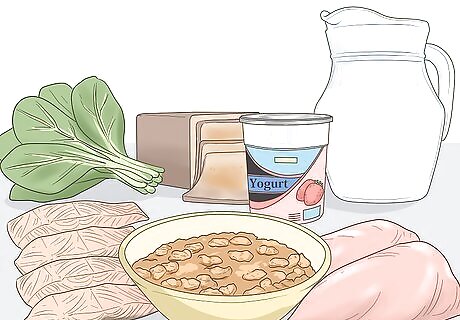
Choose nutrient-dense foods. Nutrient-dense foods provide your body with the vitamins and minerals it needs to work hard and recover quickly. Avoid junk foods with empty calories and fill your diet with these "power foods" instead: Vegetables: leafy greens (spinach, kale), sweet potatoes, mushrooms, bell peppers Whole grains: wheat, corn, quinoa, barley Fruits: blueberries, strawberries, pomegranates Dairy: yogurt, low-fat milk Protein: lean poultry, salmon, sardines

Consume more calories. If you want bigger arms, you need to eat more. An inch of gain (about 2.5 centimeters) in the size of your upper arms means another 10 pounds (about 4.5 kilograms) of body weight. Weigh yourself every day and aim to gain a total of about a half-pound (a quarter-kilo) a week. If you're not gaining, increase your calorie intake by 200-300 a day.Tip: Track your calories on a daily basis to make sure you're eating enough to gain muscle mass. You might want to download a smartphone app to help.

Include plenty of protein in your diet. Protein is the building block of muscle, so if you want to grow your biceps, you need to make sure you're eating a lot of protein. Talk to your doctor for some pointers on how to gain weight in a healthy way. Ordinarily, you should consume 0.8 grams (0.03 oz) of protein per kilogram of body weight (or 0.35 grams per pound) each day. However, you want to consume at least 1.2 to 1.7 grams (0.04 to 0.06 oz) of protein for every kilogram of body weight (0.5 to 0.8 grams for every pound) each day to build additional muscle mass. For example, if you weigh 75 kilograms (165 pounds), you would ordinarily need to consume an average of 60 grams (2.1 oz) of protein every day. This means 240 of your daily calories should come from protein to maintain your current body structure. However, if you wanted to build muscle, you would need to increase the protein you consume to between 75 grams (2.6 oz) (300 calories) and 128 grams (4.5 oz) (512 calories).












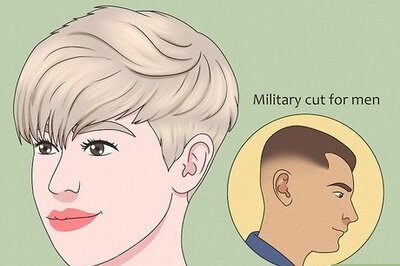





Comments
0 comment